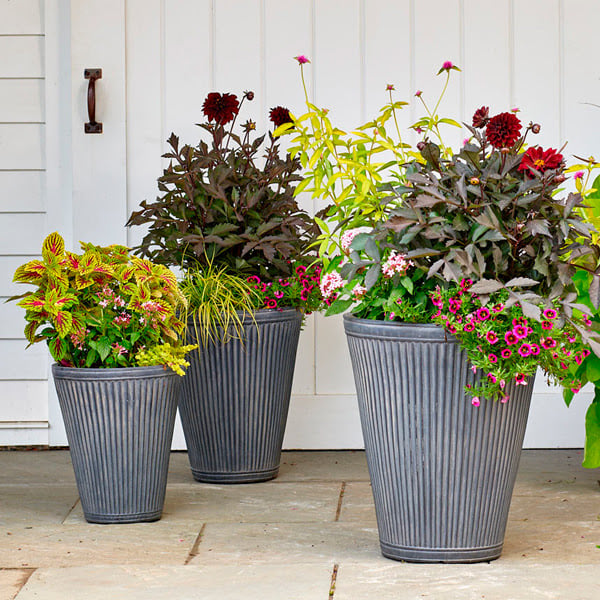Introduction
Plant garden pots are essential tools for gardeners, whether you’re cultivating a small balcony garden or a sprawling backyard oasis. These containers not only hold soil and plants but also influence plant health, growth, and aesthetic appeal. Understanding different types of garden pots, their materials, and how to care for them can significantly improve your gardening success. This article explores everything you need to know about plant garden pots, including material benefits, size considerations, and maintenance tips, to help you make informed choices that suit your gardening needs.
Why Choosing the Right Plant Garden Pots Matters
Selecting the right garden pot affects plant health and growth. The container’s material, size, and drainage features play critical roles in providing optimal conditions for your plants.
Material Matters: Comparing Common Garden Pot Types
- Terracotta: Known for breathability, terracotta pots allow air and moisture to pass through, preventing root rot. They are porous and can dry out quickly, ideal for succulents and drought-tolerant plants.
- Plastic: Lightweight and affordable, plastic pots retain moisture longer, which benefits moisture-loving plants. They are less breathable but come in various colors and designs.
- Ceramic/Glazed Pots: These pots combine durability with aesthetics. Their glaze reduces porosity, keeping soil moist but may cause water retention issues if drainage is inadequate.
- Metal: Often stylish and modern, metal pots conduct heat, which can stress plants in hot climates. Use them with caution and consider liners.
Each material has pros and cons, so consider the plant species and environmental conditions when selecting pots.
Size and Shape: Matching Pots to Plant Needs
Choosing the correct pot size is crucial:
- Small pots are suitable for seedlings and small plants but may require frequent watering.
- Medium to large pots provide more room for root development and water retention.
Shape also affects root growth; deeper pots benefit plants with long roots, while shallow pots suit plants with shallow roots.
Essential Features of Quality Plant Garden Pots
Drainage and Aeration
Proper drainage is vital to prevent waterlogging and root rot. Look for pots with:
- Drainage holes at the bottom.
- Raised feet or saucers to allow excess water to escape.
Additionally, some pots have built-in aeration designs to improve oxygen flow to roots.
Weight and Portability
Consider the weight of the pot, especially if you plan to move plants seasonally or rearrange your garden. Plastic pots are lighter, while ceramic and terracotta are heavier.
Aesthetics and Garden Style
Choose pots that complement your garden’s design. Color, texture, and shape can enhance visual appeal. For example, rustic terracotta suits Mediterranean styles, while sleek metal or glazed pots fit modern aesthetics.
Caring for Your Plant Garden Pots: Tips for Longevity and Plant Health
Cleaning and Maintenance
Regularly clean pots to prevent disease buildup:
- Remove old soil and debris.
- Scrub with mild soap and water.
- Disinfect with diluted bleach solution if necessary.
Seasonal Care
- Protect fragile pots (like terracotta) from frost damage by moving them indoors during cold months.
- Check for cracks or damage and replace pots as needed.
Repotting and Soil Management
Repot plants every 1-2 years to refresh soil nutrients and avoid root bound conditions. Use high-quality potting mix suited for your plant type.
Expert Insights and Trends in Plant Garden Pots
Garden experts emphasize sustainability and functionality:
- Eco-friendly pots: Biodegradable and recycled materials are gaining popularity, reducing environmental impact.
- Smart pots: Fabric and air-pruning pots improve root health by enhancing aeration.
A case study by the American Horticultural Society showed that plants in breathable fabric pots exhibited 30% better root development compared to traditional plastic pots.
Conclusion
Plant garden pots are more than just containers; they are critical to your plants’ overall health and your garden’s beauty. Selecting the right pot involves understanding materials, size, drainage, and how these factors influence plant growth. Proper care, including cleaning and seasonal maintenance, ensures your pots last longer and provide optimal conditions. Embrace both functionality and style by choosing pots that suit your plants and your garden’s aesthetic. Start experimenting with different types to discover what works best for your green space and enjoy a thriving, vibrant garden.
